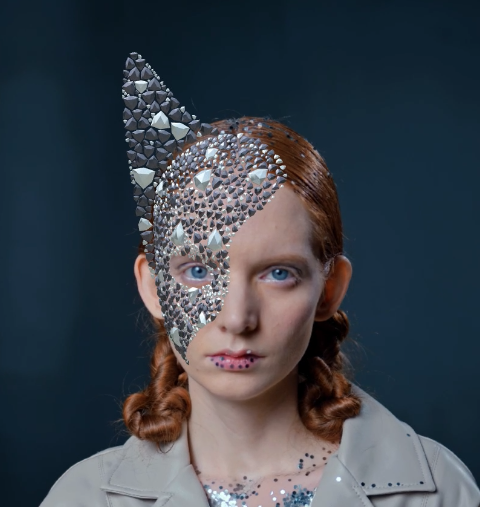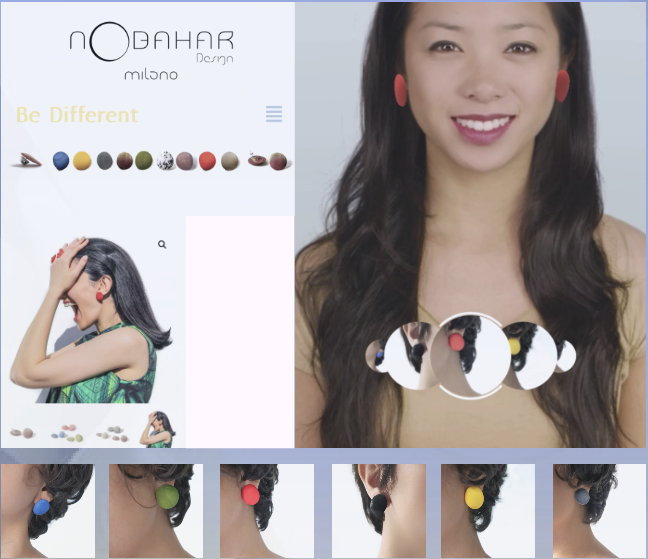The power of AR in jewelry experience
In recent years, Augmented Reality (AR) has emerged as a powerful tool in transforming the traditional jewelry shopping experience. By allowing customers to virtually try on jewelry before making a purchase, AR applications are reshaping how consumers interact with and perceive jewelry. In this article, we will explore the various ways in which AR is influencing the jewelry retail landscape and the benefits it brings to both retailers and brands.
Benefits of AR for Jewelry Retailers and Brands:
- Increased Engagement and Product Sales
AR enables customers to interact with jewelry in a more realistic manner, leading to enhanced engagement and increased sales. The ability to virtually try on pieces fosters a deeper connection between customers and the products. - Reduction in Returns
Virtual jewelry trials through AR can significantly reduce the number of returns attributed to fit or style issues. This not only streamlines the purchasing process but also contributes to a more efficient supply chain. - Enhanced Brand Perception
AR enhances the overall brand experience by creating a personalized and engaging shopping environment. This improved interaction can positively impact how customers perceive a brand, fostering loyalty and positive word-of-mouth.

AR in Jewelry Retail Implementation
- Virtual Try-ons on Social Media
Leading social media platforms are integrating AR features to create interactive jewelry shopping experiences. Filters and AR lenses on platforms like Snapchat and TikTok allow users to virtually try on jewelry, making the shopping process more captivating and enjoyable. - AR Jewelry Try-on Apps
Many jewelry retailers provide dedicated applications that leverage AR for virtual try-ons. These apps utilize device cameras to capture the user’s face and digitally overlay jewelry items on their image, offering a realistic preview. - In-Store AR Experiences
Some jewelry retailers incorporate AR technology within their physical stores, creating interactive experiences. AR mirrors, for example, allow customers to see how jewelry looks on them under various lighting conditions, enhancing the in-store shopping experience. - Customized Design Tools
AR is also utilized to facilitate the creation of personalized jewelry designs. Customers can use AR applications to design pieces that reflect their individual style and preferences.

Immersive AR Experiences for Increased Brand Awareness
AR extends beyond virtual placements of jewelry in digital environments; it creates immersive experiences that tap into creativity and imagination. Platforms such as Snapchat, TikTok, Roblox, Zepeto, and IMVU enable users to adorn their avatars with unconventional jewelry, enhancing brand awareness and engagement.
The Future of AR in the Jewelry Industry
As we conclude our exploration of AR’s transformative potential in the jewelry sector, it is evident that AR is reshaping consumer interactions and perceptions of jewelry. From virtual trials to personalized experiences and immersive gaming integrations, AR is elevating brand awareness and engagement.
The future holds promising advancements, including virtual jewelry showrooms and interactive displays. With the ongoing evolution of AR technology, we anticipate even more innovative applications that will redefine the shopping experience and solidify AR’s crucial role in the jewelry industry.

In closing ...
Today’s article, alongside two others (Digital and Technological Revolution in the Jewelry Industry & The Rise of AI in the Creative Industry), serves as a testament to how digital fashion is revolutionizing various industries, including jewelry. With continuous technological progress, we can expect to witness even more innovative and revolutionary applications in the years to come.
Web3, AR, and AI are already reshaping the fashion industry, ushering in a more engaging, personalized, and sustainable future. To stay competitive in this rapidly evolving landscape, embracing digital innovations and integrating them into an omnichannel strategy is essential.
This involves combining physical stores with online platforms, offering virtual trials and digital setups, and creating engaging experiences that blur the boundaries between the physical and digital worlds. As digital tools and virtual goods continue to gain traction, the fashion industry is poised for further transformation. Brands that embrace this digital revolution will not only enhance customer experiences and market reach but also make significant strides towards sustainability.